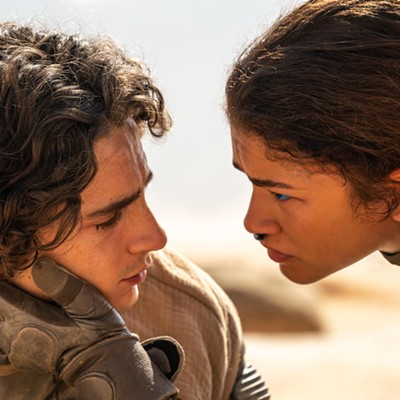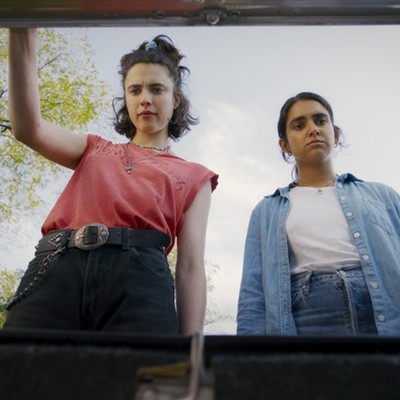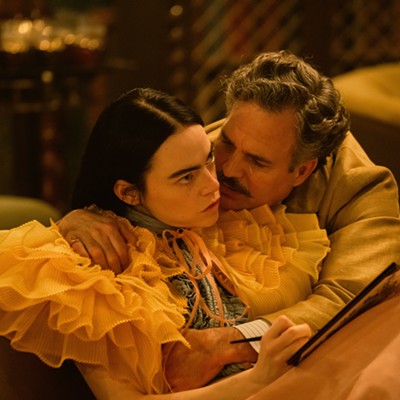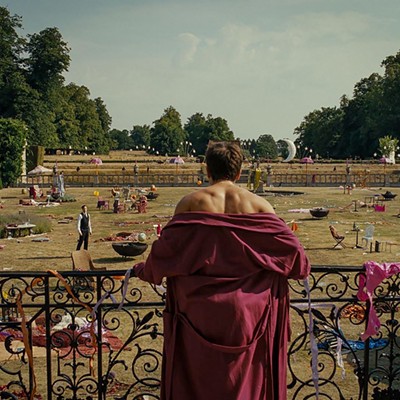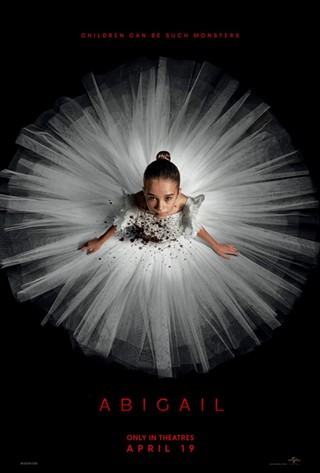In any given film scene, a director has to decide what to show, and what not to show. It's not just a question of cutting out moments in time; the camera can only shoot from one angle, and its field of vision is only so wide.
So the director's job is to ask: What moments are important, and how do I frame them? In 35 Shots of Rum, director Claire Denis answers that question by spending a long time shooting images of rice cooking. Which I found baffling.
In fact, for about an hour, I had no idea what 35 Shots of Rum was about. It's not that the film lacks characters. There's a subway-train conductor (Alex Descas) who lives with his 20-something daughter (Mati Diop). His ex-wife (Nicole Dogue) has an apartment down the hall. That takes about a half-hour to establish, during which there are lots of shots of people eating.
The daughter, Josephine, is an economics student at a university, as revealed in a long sequence that has almost no bearing on the story. Actually, that's misleading: There is no story. There are scenes, but they don't form a narrative. Josephine goes jogging with the handsome white man who lives down the hall. Her reticent father, Lionel, attends a retirement party for a colleague. Lionel's ex-wife, Gabrielle, picks up a fare in the taxi she drives and almost argues with him, but instead, they chat amiably. And then, precisely 43 minutes into the film, an event occurs: Lionel farts.
I'm not sure of the significance of this, but since virtually nothing had happened up to this point, I assumed it's an important moment. That was also where I gave up on looking for a plot. Instead, I just watched the pictures. There are some nice shots, including a particularly beautiful image of an apartment building at night with lit and unlit windows creating an asymmetrical checkerboard pattern.
Strangely, though, shortly after the fart, things start to occur. Slowly, a bit of momentum builds, and a story almost develops. But up until that point, it was like the film was showing all the moments that are left out of other movies. Imagine watching James Bond eat cornflakes and read the paper, and then argue with the cable guy about a billing issue. Then cut to later, and Bond looks like he's been in a fight, but he's just sitting around watching TV and petting a cat.
That's 35 Shots of Rum. I assume Denis is trying to show those pieces of life that cinema neglects, the quiet bits that make up the vast majority of our existence. In the process, she presents an almost disturbingly close relationship between a father and a daughter, and a glimpse at the private actions and events that we engage in everyday, and then forget about.
Such as the scene in which Lionel farts. But cinema has been around for 100 years, and there are very good reasons that movies aren't constructed around these moments. Denis is not the first to try this experiment, nor is this the first time Denis has done it: Her J'ai pas sommeil did something similar, but somehow managed to be engaging.
35 Shots of Rum fails at that, at least for the first hour; then it gets intense and weird. As if to make up for all the rice-eating and nothingness, the second part of the film includes a beheading, a strange jump cut to a horse racing along a railway track, and a wedding. It's like Denis took a bunch of shots from the other movie, the one that didn't include the scenes from the first hour, and then randomly inserted them in the last 40 minutes.
It's sort of a brilliant idea. The last section of the film is engaging; you can almost imagine the American film that would have been made around the same characters, with much greater emphasis on the romance and much less emphasis on the rice. Perhaps the dullness of the opening provides the contrast that makes the second half seem so fabulous.
Or maybe Denis put the second half in so you could reconstruct the missing pieces yourself. Such little attention is given to the romance that leads to the wedding that it's impossible to say how it came about.
In the end, 35 Shots of Rum becomes intriguing. The slow, sustained shots of nothing happening that bogged down the first hour are replaced by rapid cuts to significant scenes. Though there's still no narrative, there's at least the hint of one, a set of salient events and images that cry out for connection.
Denis has, in effect, made two films: one about the things we do without interest, and another about the interesting moments, but presented without explanation. If you're feeling particularly French, and looking for a challenge, 35 Shots of Rum might be worth seeing. But you might want to bring something to read for the first hour.

